 I am going to be a little late with this week’s episode of The Tudor's Historical vs. Hollywood, but I got a couple of emails from readers asking if Mary Tudor's love interest, Philip of Bavaria was a Hollywood invention. Philip Count Palatine, duke of Bavaria was a real person, but whether he was as hunky as Colin O’Donoghue is up for debate.
I am going to be a little late with this week’s episode of The Tudor's Historical vs. Hollywood, but I got a couple of emails from readers asking if Mary Tudor's love interest, Philip of Bavaria was a Hollywood invention. Philip Count Palatine, duke of Bavaria was a real person, but whether he was as hunky as Colin O’Donoghue is up for debate.Philip, Duke of Bavaria came to England at the request of Henry VIII on December 8, 1539 with the hopes of wedding Mary. In the Tudors, Philip is portrayed as a Lutheran, but Cardinal Farnese reported to Pope Paul III that Philip was a Catholic. (1) Still, everyone knew the marriage alliance came with Lutheran and not Catholic support. Much like Cleves, Bavaria was closely aligned to the powerful princes of the Protestant Schmalkaldic league, but had not joined the league. At the time of the marriage negotiations, bets were being placed that Bavaria's status would soon change and upon hearing of the marriage negotiations, the French ambassador Castillon predicted that, ‘…if this King be abandoned both by Francis and the Emperor, he will enter the league and do his best to bring in the duke of Juliers [Duke William of Cleves] and the duke of Bavaria.’ (2) (Castillon’s prediction proved inaccurate because Henry stayed Catholic and Bavaria ended up fighting on the Catholic Imperial side in the Schmalkaldic War of 1546-1547….a story for another day.)
 I hate to wreck a good love story, but Mary was actually not too keen on the idea of marrying Philip wishing instead ‘to continue still a maid during her life.’ But alas, she also understood that daddy’s wishes were to be obeyed and a secret betrothal was arranged. Philip was made a knight of the Order of England and a marriage contract and draft treaty were drawn up. In the marriage contract, Henry promised his daughter would come with a dowry including “40,000 golden florins” and a bunch of other goodies (but inheriting the thrown of England was not one of them). In return, Philip promised to kick the French or Imperial king’s butt if they dared to gang up on Henry. Philip then spoke to Mary in the gardens then adjoining the abbey of Westminster using some latin and German translators. Mary's dashing new suitor was even bold enough to plant a wet one on his future bride. Awwwwww. Had Mary found true love? According to court gossip, the betrothal was at least a done deal and the happy couple, ‘mutually declared, the said lord his resolution, taken with this King, to have her for wife …and the said lady her willingness to obey her father.'(3)
I hate to wreck a good love story, but Mary was actually not too keen on the idea of marrying Philip wishing instead ‘to continue still a maid during her life.’ But alas, she also understood that daddy’s wishes were to be obeyed and a secret betrothal was arranged. Philip was made a knight of the Order of England and a marriage contract and draft treaty were drawn up. In the marriage contract, Henry promised his daughter would come with a dowry including “40,000 golden florins” and a bunch of other goodies (but inheriting the thrown of England was not one of them). In return, Philip promised to kick the French or Imperial king’s butt if they dared to gang up on Henry. Philip then spoke to Mary in the gardens then adjoining the abbey of Westminster using some latin and German translators. Mary's dashing new suitor was even bold enough to plant a wet one on his future bride. Awwwwww. Had Mary found true love? According to court gossip, the betrothal was at least a done deal and the happy couple, ‘mutually declared, the said lord his resolution, taken with this King, to have her for wife …and the said lady her willingness to obey her father.'(3)Then…inexplicably, the marriage negotiations fell apart and Philip returned to his own country mid January. We are left to speculate on why the match failed, but most likely Henry changed his mind because he didn’t need the support of the Protestant League once French and Imperial forces were no longer a threat.
But if you want to see more of the gorgeous O’Donoghue then viewers might be in luck because history tells us that we have not seen the last of Philip. He returned to England in 1546 to win Mary back. Will these two star-cross lovers find true love? Maybe season four will continue their torrid tale...
Notes:
(1) L.P., vol. XIV Part 2: August-December 1539, Card Farnese to Paul III
(2)L.P., vol. XIV Part 1: January-July 1539, pp. 51-77. Castillon to Montmorency
(3) L.P., vol. XIV Part 2: August-December 1539, Marillac to Montmorency

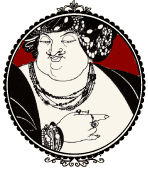

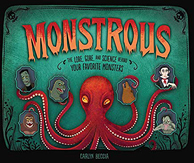
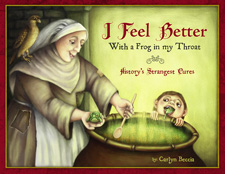
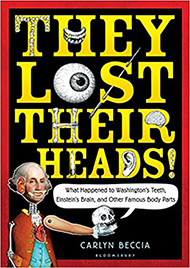


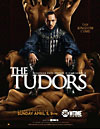

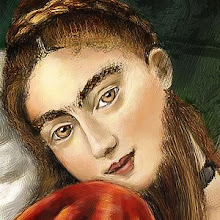

6 comments:
Thank you, Bearded Lady, for providing the background o the "real romance" of Bavarian Philip and Mary. Since season 4 will be back to 10 episodes rather than this season's rather-rushed 8, I also hope we will see Duke Philip reappear to pursue his courtship.
Somewhat off-topic: I find myself wondering how much 40,000 florins would be in today's money? The fact that Mary's dowry was to be given in florins (and not English money) leads me to think that international transactions used florins as the international currency (?) I found a page listing the currency units in 16th century England http://tinyurl.com/otetv5 but even that doesn't give us an idea of their relative value. Is there a resource you could point to?
Hi kasandra, That's a good question. Dowries for princesses in the 16th century were almost always paid in gold and the florin was pure gold (there was a half-florin at one point.) But I am not sure how Henry’s debasing of the coin affected gold in general. And then there would be other factors that decreased the value of gold - for one there was simply more of it.
But my guess would be that the Italian florins had decreased significantly in value by the 16th century. The fortunes made by Italian bankers of the 15th century certainly make Henry’s 20,000 florins seems kind of stingy. For example, Gian Galeazzo’s daughter, Violante received 200,000 golden florins as part of her dowry. Pope Paul II’s tiara alone was worth 200,000 golden florins.
As far as the conversion rate for florins go...ick tricky. I use a site called measuringworth.net but it only works for the 1700s onward.
Maybe someone else will know more?
So, is this the review of the 8th and final episode of the season?
No, the last episode is coming. Just got a little sidetracked. I will be done with it before the end of the week.
Thanks for the update -- but Philip actually returned to England twice in an effort to win Mary's hand in marriage. He came to London in 1543 and again in 1546, staying until King Henry died in 1547. Twice Philip and Henry agreed to marriage contracts, but the Elector would not agree to them, so both contracts expired. As Mary was not in line for the throne at the time, was deemed a bastard, and didn't have a large dowry, we could be excused in believing that Philip did actually care about Mary -- and would have been a better husband than her Spanish Philip.
Hi Texshan - I already mentioned Philip 1546 return in the last paragraph.
I don't think the Tudors is going to bring him back in season 4...too bad. I liked him.
Post a Comment